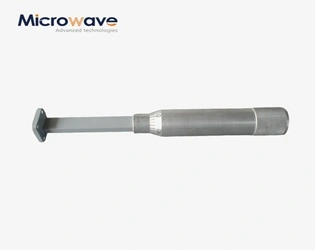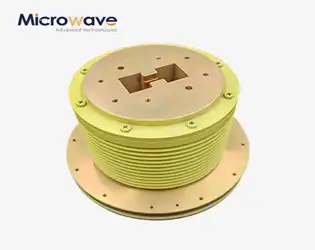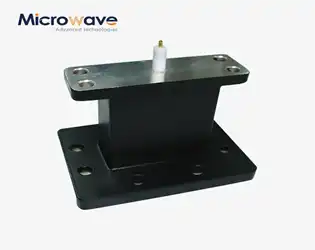BLOG

How Does Waveguide Sliding Termination Improve Signal Transmission Efficiency?
June 19, 2025
In the realm of microwave technology, achieving optimal signal transmission efficiency remains a fundamental challenge that directly impacts system performance across various applications. Waveguide Sliding Termination represents a critical solution that addresses impedance mismatches, reduces signal reflections, and enhances overall transmission quality. This advanced component serves as a precision instrument designed to optimize electromagnetic wave propagation within waveguide systems, making it indispensable for applications ranging from satellite communications to aerospace defense systems. By providing adjustable termination characteristics, these devices enable engineers to fine-tune system parameters for maximum efficiency while maintaining signal integrity across broad frequency ranges.
Why Are Coaxial Calibration Kits Critical for Maintaining Vector Network Analyzer Performance?
June 19, 2025
Vector Network Analyzers (VNAs) represent the pinnacle of precision measurement technology in the microwave and RF industry, serving as indispensable instruments for characterizing complex electrical networks. However, the accuracy and reliability of these sophisticated devices fundamentally depend on proper calibration procedures that eliminate systematic errors and ensure measurement integrity. Coaxial Calibration Kits emerge as the cornerstone of this calibration process, providing the reference standards necessary to establish measurement traceability and maintain optimal VNA performance across diverse applications spanning satellite communications, aerospace systems, and telecommunications infrastructure. The significance of coaxial calibration extends beyond mere measurement accuracy, encompassing the broader operational reliability of critical systems where precision matters most. When VNAs operate without proper calibration using high-quality Coaxial Calibration Kits, measurement uncertainties can cascade through entire system designs, leading to performance degradation, increased development costs, and potential system failures in mission-critical applications. Understanding the pivotal role these calibration standards play in maintaining VNA performance becomes essential for engineers and technicians working across industries where measurement precision directly impacts system reliability and operational success.
June 19, 2025
In today's rapidly evolving telecommunications landscape, the demand for high-frequency, high-performance antenna solutions has never been greater. The Ultra Double-ridged Horn Antenna stands out as a superior choice for millimeter-wave applications due to its exceptional broadband capabilities, superior signal integrity, and robust construction designed for extreme operational environments. This advanced antenna technology offers unparalleled performance across frequencies ranging from 0.5 GHz to 110 GHz, making it indispensable for satellite communications, aerospace systems, defense applications, and next-generation wireless networks. Its innovative double-ridged design ensures minimal signal distortion while maintaining excellent directional characteristics, positioning it as the preferred solution for engineers and system designers seeking reliable, high-performance millimeter-wave communication systems.
What Are the Key Advantages of Using a Broadwall Directional Coupler in Satellite Communications?
June 18, 2025
In the rapidly evolving landscape of satellite communications, the choice of microwave components can significantly impact system performance, reliability, and operational efficiency. Among the most critical components in satellite communication systems is the Broadwall Directional Coupler, a sophisticated device that enables precise signal monitoring, power sampling, and frequency distribution across complex networks. This essential component serves as the backbone for numerous satellite applications, from ground station operations to inter-satellite communication links, ensuring optimal signal integrity and minimal power loss throughout the transmission chain.
What Makes the Waveguide Adjustable Support Essential for Your Microwave Systems?
June 18, 2025
In the complex world of microwave system engineering, precision and stability form the backbone of reliable signal transmission. The Waveguide Adjustable Support emerges as a critical component that ensures optimal performance across diverse applications, from satellite communications to aerospace defense systems. This essential hardware component addresses fundamental challenges in waveguide alignment, vibration control, and system longevity that engineers face daily in demanding operational environments. The Waveguide Adjustable Support serves as the foundation for maintaining precise alignment and unwavering stability in microwave systems where even minor deviations can compromise signal integrity. Advanced Microwave Technologies Co., Ltd. has engineered these supports to deliver exceptional load-bearing capacity while maintaining compact design profiles, making them indispensable for applications requiring both reliability and space efficiency. Their robust construction ensures consistent performance across temperature extremes and challenging environmental conditions, while the adjustable design accommodates various system configurations and installation requirements.
How Does Minimal Insertion Loss in Double Ridge Waveguide Rotary Joints Benefit Performance?
June 18, 2025
In the demanding world of microwave technology, where signal integrity determines system success or failure, minimal insertion loss in Double Ridge Waveguide Rotary Joints represents a critical performance advantage that directly impacts overall system efficiency. The insertion loss characteristic of these specialized components fundamentally determines how much signal power is preserved during transmission through rotating connections, making it a pivotal factor in applications ranging from satellite communications to advanced radar systems. Double Ridge Waveguide Rotary Joints engineered with minimal insertion loss deliver superior signal fidelity, reduced power consumption, enhanced system reliability, and improved operational efficiency across diverse high-frequency applications. This performance optimization becomes increasingly crucial as modern communication systems operate at higher frequencies and demand greater precision, where even fractional decibel losses can significantly impact system performance and operational costs.
What Sets the End Launch Waveguide to Microstrip Adapter Apart in High-Power Systems?
June 18, 2025
In today's rapidly evolving microwave technology landscape, the transition between waveguide and microstrip transmission lines has become increasingly critical for high-power applications. The End Launch Waveguide to Microstrip Adapter stands as a revolutionary solution that bridges these two distinct transmission mediums with exceptional precision and reliability. This specialized component addresses the fundamental challenge of maintaining signal integrity while converting from the enclosed waveguide structure to the open microstrip configuration, particularly in demanding high-power environments where traditional adapters often fail to deliver consistent performance. The End Launch Waveguide to Microstrip Adapter distinguishes itself through its unique ability to handle extreme power levels while maintaining minimal signal degradation. Unlike conventional transition methods, this adapter incorporates advanced engineering principles that enable seamless impedance matching between waveguide and microstrip systems. Its robust construction, combined with precision manufacturing tolerances, ensures reliable operation in harsh environmental conditions typical of aerospace, defense, and satellite communication applications. The adapter's capability to support frequencies up to 110 GHz while maintaining low insertion loss makes it an indispensable component for next-generation high-power microwave systems requiring uncompromising performance standards.
Which Connector Types Should You Choose in Coaxial Calibration Kits for Your RF Applications?
June 18, 2025
Selecting the appropriate connector type in coaxial calibration kits is fundamental to achieving accurate RF measurements and optimal system performance. The choice directly impacts measurement precision, frequency response, and long-term reliability of your testing equipment. Modern RF applications spanning from satellite communications to 5G networks require specific connector configurations to handle various frequency ranges, power levels, and environmental conditions. Understanding the technical specifications, impedance characteristics, and mechanical properties of different connector types within coaxial calibration kits enables engineers to make informed decisions that enhance measurement accuracy while reducing systematic errors in complex microwave systems.




